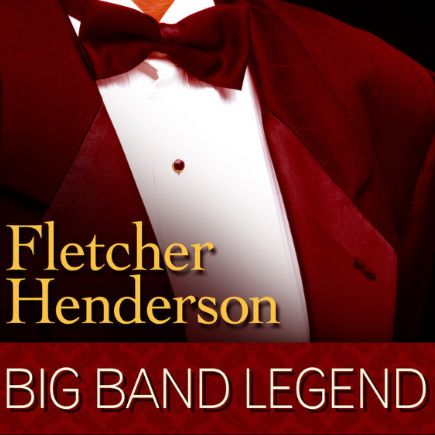Queer Notions, audace expérimentale au cœur du swing naissant
Composée en 1933 par Don Redman et Buster Bailey, Queer Notions fut enregistrée le 18 août de la même année à New York par Coleman Hawkins avec l’orchestre de Fletcher Henderson. Cette session réunit une formation de tout premier plan: Russell Smith, Henry ‘Red’ Allen et Bobby Stark (trompettes), Sandy Williams et Dicky Wells (trombones), Russell Procope, Hilton Jefferson et Coleman Hawkins (saxophones), Fletcher Henderson (piano), Bernard Addison (guitare), John Kirby (basse) et Walter Johnson (batterie).
Dans un contexte où le swing s’imposait comme la musique des grandes salles de bal, cet enregistrement illustre une autre dimension du jazz, tournée vers l’expérimentation et la recherche sonore. Le titre même, Queer Notions, intrigue et surprend. Dans le langage des années 1930, ‘queer’ renvoyait à l’étrange, à l’inhabituel, voire à une posture anticonformiste.
Cette connotation trouve un écho direct dans la musique: la pièce se distingue par son recours aux dissonances, ses textures sonores inhabituelles et une architecture novatrice. L’usage inventif des silences et des pauses confère à l’ensemble un caractère dramatique et imprévisible. Les ruptures rythmiques, les harmonies anguleuses et le contraste des dynamiques évoquent un univers presque surréaliste, déroutant mais captivant.
Dans cette œuvre, Fletcher Henderson démontre que son orchestre pouvait être bien plus qu’une machine à faire danser: il se transforme en véritable laboratoire créatif. Aux côtés de Hawkins et Redman, musiciens visionnaires, il ouvre la voie à une écriture orchestrale où la complexité harmonique et la liberté individuelle des solistes s’affirment comme des éléments centraux.
Queer Notions dépasse ainsi le cadre du swing classique pour anticiper les audaces du jazz moderne. Cette pièce visionnaire préfigure, par son esprit d’expérimentation, le bebop des années 1940, où l’exploration des harmonies et l’affirmation des voix individuelles deviendront essentielles.
Queer Notions, audacia experimental en el corazón del swing naciente
Compuesta en 1933 por Don Redman y Buster Bailey, Queer Notions fue grabada el 18 de agosto de ese mismo año en Nueva York por Coleman Hawkins con la orquesta de Fletcher Henderson. La sesión reunió a una formación de primer nivel: Russell Smith, Henry ‘Red’ Allen y Bobby Stark (trompetas), Sandy Williams y Dicky Wells (trombones), Russell Procope, Hilton Jefferson y Coleman Hawkins (saxofones), Fletcher Henderson (piano), Bernard Addison (guitarra), John Kirby (contrabajo) y Walter Johnson (batería).
En un contexto en el que el swing se imponía como la música de los grandes salones de baile, esta grabación ilustra otra dimensión del jazz, orientada hacia la experimentación y la búsqueda sonora. El propio título, Queer Notions, intriga y sorprende. En el lenguaje de los años treinta, ‘queer’ evocaba lo extraño, lo inusual, incluso una postura anticonformista.
Esta connotación se refleja directamente en la música: la pieza se distingue por su uso de disonancias, sus texturas sonoras poco habituales y una arquitectura innovadora. El empleo inventivo de silencios y pausas otorga al conjunto un carácter dramático e imprevisible. Las rupturas rítmicas, las armonías angulosas y los contrastes dinámicos sugieren un universo casi surrealista, desconcertante pero cautivador.
En esta obra, Fletcher Henderson demuestra que su orquesta podía ser mucho más que una máquina de baile: se convierte en un verdadero laboratorio creativo. Junto a Hawkins y Redman, músicos visionarios, abrió el camino hacia una escritura orquestal donde la complejidad armónica y la libertad individual de los solistas se afirman como elementos centrales.
Queer Notions trasciende así el marco del swing clásico para anticipar las audacias del jazz moderno. Esta pieza visionaria prefigura, por su espíritu experimental, el bebop de los años cuarenta, donde la exploración de armonías y la afirmación de las voces individuales se volverían esenciales.
Queer Notions, audacia sperimentale nel cuore dello swing nascente
Composta nel 1933 da Don Redman e Buster Bailey, Queer Notions fu incisa il 18 agosto dello stesso anno a New York da Coleman Hawkins con l’orchestra di Fletcher Henderson. La sessione riunì una formazione di prim’ordine: Russell Smith, Henry ‘Red’ Allen e Bobby Stark (trombe), Sandy Williams e Dicky Wells (tromboni), Russell Procope, Hilton Jefferson e Coleman Hawkins (sassofoni), Fletcher Henderson (pianoforte), Bernard Addison (chitarra), John Kirby (contrabbasso) e Walter Johnson (batteria).
In un contesto in cui lo swing si affermava come la musica delle grandi sale da ballo, questa registrazione mostra un’altra dimensione del jazz, orientata alla sperimentazione e alla ricerca timbrica. Lo stesso titolo, Queer Notions, incuriosisce e sorprende. Nel linguaggio degli anni Trenta, ‘queer’ richiamava lo strano, l’inedito, persino un atteggiamento anticonformista.
Questa connotazione trova un riscontro diretto nella musica: il brano si distingue per l’uso delle dissonanze, per le sue texture sonore insolite e per un’architettura innovativa. L’impiego inventivo di pause e silenzi conferisce all’insieme un carattere drammatico e imprevedibile. Le rotture ritmiche, le armonie angolose e i contrasti dinamici evocano un universo quasi surreale, disorientante ma affascinante.
In quest’opera, Fletcher Henderson dimostra che la sua orchestra poteva essere molto più di una macchina da ballo: si trasforma in un vero laboratorio creativo. Accanto a Hawkins e Redman, musicisti visionari, aprì la strada a una scrittura orchestrale in cui la complessità armonica e la libertà individuale dei solisti si affermano come elementi centrali.
Queer Notions supera così i confini dello swing classico per anticipare le audacie del jazz moderno. Questo brano visionario prefigura, con il suo spirito sperimentale, il bebop degli anni Quaranta, dove l’esplorazione armonica e l’affermazione delle voci individuali sarebbero diventate essenziali.
Queer Notions, experimental boldness at the heart of early swing
Composed in 1933 by Don Redman and Buster Bailey, Queer Notions was recorded on August 18 of the same year in New York by Coleman Hawkins with Fletcher Henderson’s orchestra. The session brought together a first-rate lineup: Russell Smith, Henry ‘Red’ Allen, and Bobby Stark (trumpets); Sandy Williams and Dicky Wells (trombones); Russell Procope, Hilton Jefferson, and Coleman Hawkins (saxophones); Fletcher Henderson (piano); Bernard Addison (guitar); John Kirby (bass); and Walter Johnson (drums).
At a time when swing was establishing itself as the soundtrack of grand ballrooms, this recording illustrates another dimension of jazz, one oriented toward experimentation and sonic exploration. The very title, Queer Notions, intrigues and surprises. In the language of the 1930s, ‘queer’ suggested the strange, the unusual, even a deliberately unconventional stance.
This connotation resonates directly in the music: the piece stands out for its use of dissonance, its unusual sonic textures, and its innovative structure. The inventive handling of silences and pauses lends the whole a dramatic and unpredictable quality. Angular harmonies, rhythmic breaks, and dynamic contrasts conjure up an almost surreal world—disconcerting yet captivating.
In this work, Fletcher Henderson shows that his orchestra could be far more than a dance machine: it became a true creative laboratory. Alongside Hawkins and Redman, visionary musicians, he paved the way for orchestral writing in which harmonic complexity and the soloists’ individual freedom emerged as central elements.
Queer Notions thus transcends the framework of classic swing to anticipate the daring explorations of modern jazz. With its experimental spirit, this visionary piece foreshadows the bebop of the 1940s, where harmonic complexity and the affirmation of individual voices would become essential.


